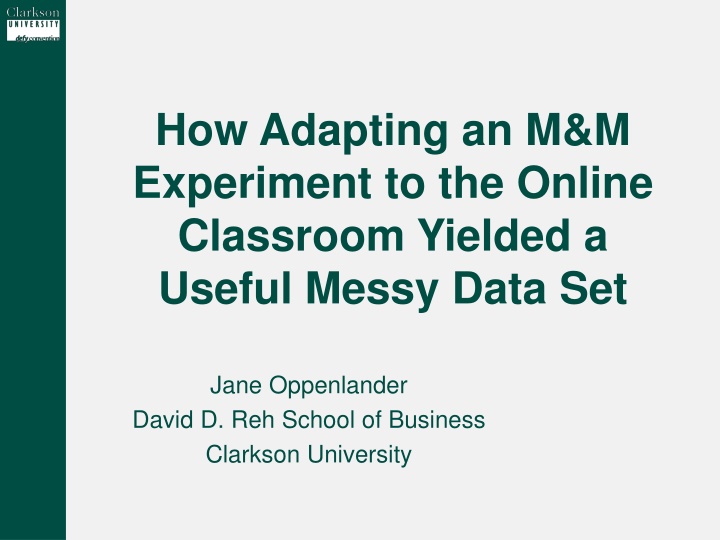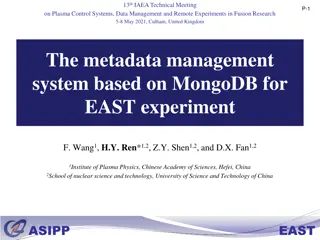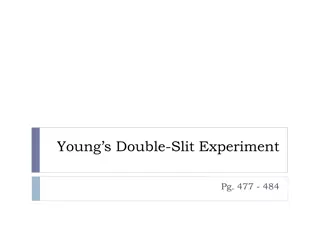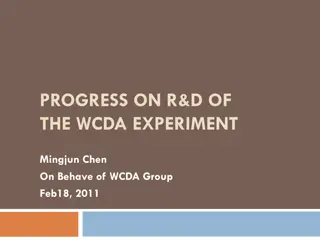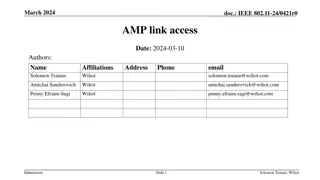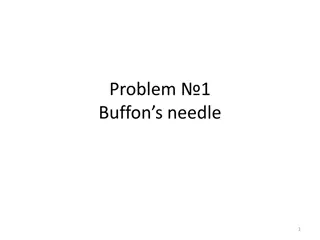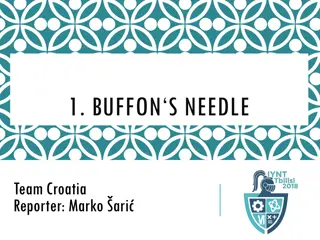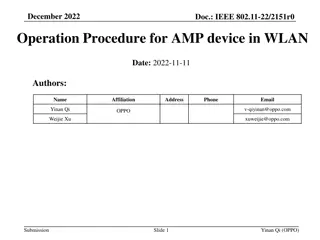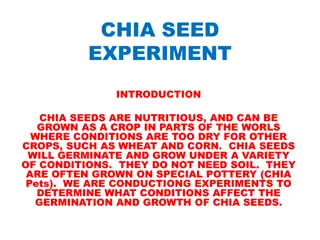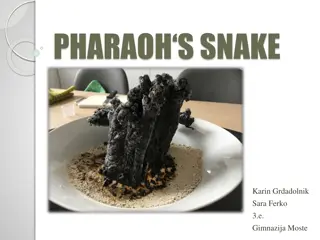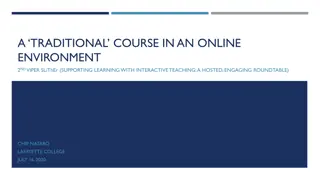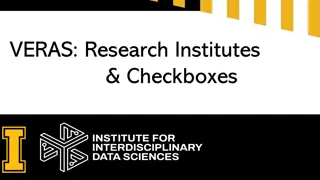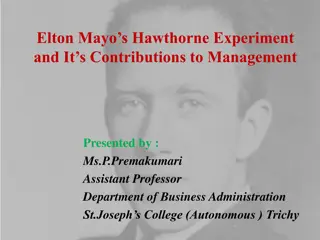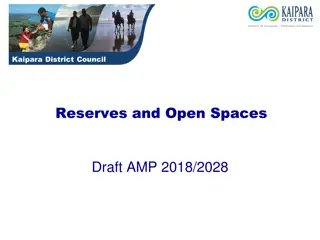Adapting M&M Experiment Online: Challenges & Practical Data Skills
Candy experiments are adapted for the online classroom, generating messy data sets for teaching data science skills. Explore the goals, background, and setting of this statistical activity in an MBA statistics course.
Download Presentation

Please find below an Image/Link to download the presentation.
The content on the website is provided AS IS for your information and personal use only. It may not be sold, licensed, or shared on other websites without obtaining consent from the author.If you encounter any issues during the download, it is possible that the publisher has removed the file from their server.
You are allowed to download the files provided on this website for personal or commercial use, subject to the condition that they are used lawfully. All files are the property of their respective owners.
The content on the website is provided AS IS for your information and personal use only. It may not be sold, licensed, or shared on other websites without obtaining consent from the author.
E N D
Presentation Transcript
How Adapting an M&M Experiment to the Online Classroom Yielded a Useful Messy Data Set Jane Oppenlander David D. Reh School of Business Clarkson University
Goals Illustrate the challenges encountered when adapting a classroom activity to the online environment. Show how the activity modified for online yielded a messy data set that is used to teach practical data science skills applicable in both learning environments. Motivate you to: Adapt your classroom activities to the online environment Incorporate data science skills into introductory statistics courses
Background: Candy Experiments Candy experiments are used to teach Central Limit Theorem and sampling distributions: (Rossman, 1996), (Dyck and Gee, 1998) Probability: (Rossman, 1996), (Magel, 1998) Chi-squared tests: Magel (1996) Simple linear regression and correlation: (Froelich and Stephenson, 2013) One-way ANOVA: (Schwartz, 2013) Implements GAISE recommendations Foster active learning Integrate real data with a context and purpose Teach statistical thinking Teach statistics as an investigative process of problem- solving and decision making.
Setting: Introductory MBA Statistics Course Required course, class sizes 5-30, 10 week quarter Classroom: Evening class, once a week, 3 hours 20 minutes Online: Fully asynchronous Students Full-time and part-time Undergraduate, graduate students, working professionals, Each class uses their data for a one-way ANOVA Data file containing results from all previous classes used for other classroom activities (cumulative data set)
M&M Classroom Activity One-way ANOVA - 1 Brief lecture on basic principles of designing experiments Instructor provides Research Question: Is there a difference in the number of pieces of candy in packages of M&M s for three different varieties? Limited number of fun size packages of M&M s: plain, peanut, pretzel Blank spreadsheet Required information to collect Activity constraints: time, allergies
M&M Classroom Activity One-way ANOVA - 2 Class Discussion How many bags should be opened? How should students be assigned bags/varieties? What other information should be collected? How should the spreadsheet be constructed? Activity Students each count their M&M s and record their data Resolve issues Request spreadsheet modification Class Discussion What did you learn about collecting data? Demonstration of One-Way ANOVA with a different data set Class M&M data is used for their summative assessment Data added to the Cumulative Data Set
Modifications for Online Class Students plan data collection through a synchronous session a week before the ANOVA topic Reach consensus on instructions for conducting the experiment and formatting the spreadsheet Post instructions on course site Single serving size instead of fun size Students must acquire their own M&M s Online discussion forum for resolving issues
Challenges in Online Implementation Based on their geographic location, some students were not able to find single serving size of one of the varieties (usually pretzel) Communication takes longer in asynchronous online classes compared to synchronous online and classrooms. Students participation varies Most difficulties arise from student participation and the asynchronous nature of communication
Characteristics of Cumulative Data Set Mix of package sizes (fun size and single serving) Outliers Online students who brought the wrong size Classroom students sometimes use holiday themed packaged different distribution of colors Missing data Both complete records and attributes
Cumulative Data Set Pedagogical Applications Offers many possibilities for students to apply statistical methods and data science skills Data visualization to identify outliers Creating derived data Selecting appropriate records for analysis Dispositioning missing data Documenting units and data definitions Examples Has the proportion of red M&Ms changed? Create a data visualization to show to distribution of the total number of M&Ms/package by variety Use data visualization to identify sharing size
Lessons Learned Students engage with data they have created Experiential learning about data collection and management Good for discussion forums Cumulative data set is very flexible for classroom or assessment use Fosters growth in non-statistical skills Teamwork, communication, decision making Efficient way to integrate other concepts Data science, quality control, experimental design Several iterations were needed until the online activity ran smoothly Be transparent with students and ask for their feedback
References Dyck, Jennifer and Nancy Gee. A Sweet Way to Teach Students about Sampling Distribution of the Mean. Teaching of Psychology, 25 (1996): 192-195. Froelich, Amy and W. R. Stephenson. How Much do M&M s Weigh? Teaching Statistics, 35.1 (2013):14-20. GAISE College Report ASA Revision Committee, Guidelines for Assessment and Instruction in Statistics Education College Report 2016, http://www.amstat.org/education/gaise. Magel, Rhonda. Increasing Student Participation in Large Introductory Statistics Classes. The American Statistician, 50 (1996). Magel, Rhonda. Using Cooperative Learning in Large Introductory Statistics Classes. Journal of Statistics Education , 6.3 (1998). Rossman, Allan, Workshop Statistics: Discovery with Data. New York: Springer-Verlag, 1996. Schwartz, Todd. Teaching Principles of One-Way Analysis of Variance Using M&M s Candy. Journal of Statistics Education 21.1 (2013).
